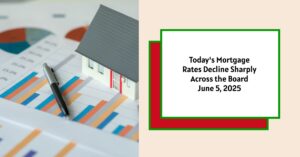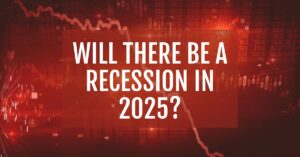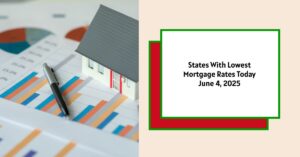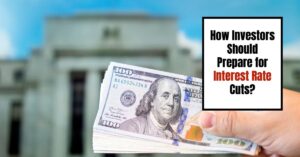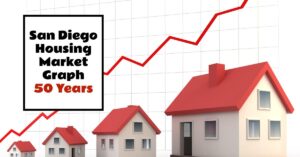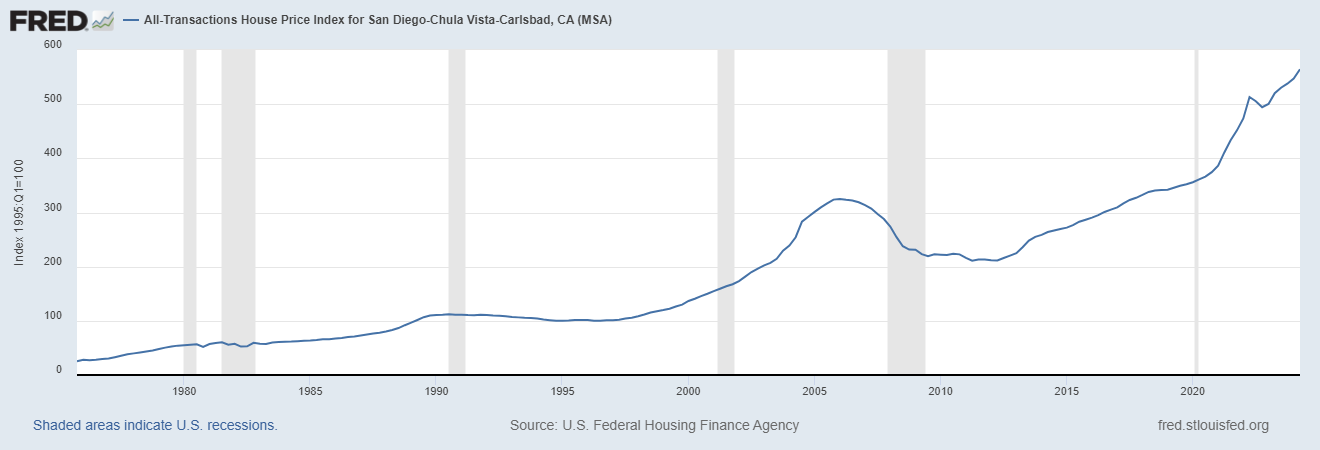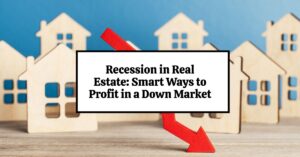As of June 5, 2025, mortgage rates have decreased significantly, with the national average for a 30-year fixed mortgage rate sitting at 6.88%, a decline from 6.90% just a day prior. This decline represents a drop of 13 basis points from last week's average of 7.01%. These figures indicate a favorable climate for both new homebuyers and those considering refinancing. Investors and potential homeowners alike should take note of the financial implications of these changes as they navigate their housing needs.
Today's Mortgage Rates – June 5, 2025: Rates Drop Sharply Across the Board
Key Takeaways
- Mortgage rates: 30-year fixed rates at 6.88%, down from 6.90%.
- Refinance rates: 30-year refinance rates have also decreased to 7.04%.
- Downward trend: Both mortgage and refinance rates are lower than last week's averages.
- Loan type impacts: Significant differences exist between fixed-rate and adjustable-rate mortgages.
- Market observation: Stay alert for daily changes as rates can fluctuate quickly.
Understanding mortgage rates, their fluctuations, and their implications can help homebuyers make informed financial decisions. Let’s break down today’s rates further, discuss how refinancing works, and analyze relevant economic factors.
Understanding Mortgage Rates Today
What Influences Mortgage Rates?
Mortgage rates are influenced by many factors, including economic indicators, market conditions, and individual borrower circumstances. Here's a closer look at how these variables come into play:
- Economic Indicators: Mortgage rates closely align with the 10-year Treasury yield, which recently fell by 2%. This is significant because the yield typically has a spread of 2% or more above mortgage rates. A declining yield often indicates lower borrowing costs, as lenders adjust rates in response to broader economic conditions. Conversely, when the economy shows strength, rates can rise to temper spending.
- Market Trends: The recent bond market has been favorable, resulting in a decrease in mortgage rates. Reports indicate that this week’s bond rally is related to declining inflation rates and shifts in economic policy, which could signal even lower borrowing costs moving forward. Homebuyers looking to finance or refinance should pay attention to these market trends as they can affect lending rates.
- Individual Borrower Factors: Many aspects of an individual’s financial health can influence mortgage rates directly:
- Credit Score: Higher credit scores generally result in better interest rates, as lenders view these borrowers as less risky.
- Debt-to-Income Ratio: A lower ratio implies stronger financial health, allowing borrowers to qualify for lower rates.
- Down Payment Amount: The more a borrower can pay upfront, the better their chances of securing a favorable mortgage.
Given these variables, buyers should stay informed about current rates and consider how their personal financial health impacts their mortgage options.
Today's Mortgage Rates Breakdown
The following table summarizes the current mortgage rates for the most common types of home loans updated as of June 5, 2025:
Current Mortgage Rates
| Program | Rate | 1W Change | APR | 1W Change |
|---|---|---|---|---|
| 30-Year Fixed Rate | 6.88% | down 0.13% | 7.28% | down 0.19% |
| 15-Year Fixed Rate | 5.89% | down 0.18% | 6.15% | down 0.22% |
| 20-Year Fixed Rate | 6.83% | down 0.14% | 7.35% | down 0.04% |
| 5-Year ARM | 7.51% | down 0.03% | 7.87% | down 0.09% |
| 7-Year ARM | 7.56% | up 0.01% | 8.07% | up 0.15% |
Data source: Zillow
Current Trends in Mortgage Types
The significant drop in 30-year fixed rates to 6.88% makes them a viable option for first-time buyers. Fixed-rate mortgages allow borrowers to lock in their interest rates for the loan's duration, ensuring predictability in monthly payments. The attractiveness of these loans becomes evident when compared to the inconsistencies of adjustable-rate mortgages (ARMs).
Adjustable-rate mortgages can offer lower initial rates, as evidenced by the 5-year ARM currently at 7.51%. However, these rates can fluctuate over time, potentially leading to higher payments as rates adjust. Borrowers must weigh whether the potential savings during the initial phase justify the risk of future rate hikes.
Understanding Refinance Rates
Refinancing represents another option for homeowners aiming to capitalize on lower rates. As of June 5, the average 30-year fixed refinance rate is at 7.04%, down from 7.16% previously. This drop allows homeowners to consider whether refinancing could lower their monthly payments or free up equity for other expenses.
Current Refinance Rates Breakdown
| Program | Rate | 1W Change | APR | 1W Change |
|---|---|---|---|---|
| 30-Year Fixed Rate | 7.04% | down 0.12% | 7.28% | down 0.19% |
| 15-Year Fixed Rate | 5.95% | down 0.07% | 6.15% | down 0.22% |
| 5-Year ARM | 8.04% | up 0.01% | 8.40% | 0.00% |
Data source: Zillow
By refinancing, homeowners can effectively lower the amount paid in interest over time. For example, shifting from a 30-year to a 15-year fixed mortgage not only reduces the interest rate but also shortens loan duration, allowing homeowners to own their properties outright sooner.
Expenses Associated with Refinancing
It’s important to note that refinancing isn't without costs. Borrowers should expect various fees, including closing costs, appraisal fees, and sometimes origination fees. These can add up to about 2-5% of the loan amount, so homeowners must evaluate whether the long-term savings outweigh these upfront costs. A mortgage refinance calculator can help determine the interest rate needed to make refinancing worthwhile.
Details on Various Loan Types
Apart from fixed-rate and adjustable-rate mortgages, there are several other important loan types that homebuyers and homeowners should consider:
Government Loans
- FHA Loans (Federal Housing Administration)
- Current Rate: 7.04% for 30-year fixed rate (down 0.17%).
- Benefits: FHA loans are designed for low-to-moderate-income borrowers who may have lower credit scores. They typically require a lower minimum down payment of 3.5%, which makes homeownership more accessible to many individuals.
- VA Loans (Department of Veterans Affairs)
- Current Rate: 6.41% for 30-year fixed rate (down 0.07%).
- Benefits: VA loans are exclusive to veterans, active-duty personnel, and certain members of the National Guard and Reserves. They offer competitive interest rates and often do not require any down payment, making them an excellent option for qualifying individuals.
- USDA Loans (U.S. Department of Agriculture)
- Benefits: USDA loans offer financing for rural and suburban homebuyers who meet certain income requirements. While rates for USDA loans fluctuate based on market conditions, they can provide excellent terms, including no down payment and lower insurance costs.
Jumbo Loans
Jumbo loans are non-conforming loans that exceed the conforming loan limits set by the Federal Housing Finance Agency (FHFA). They generally come with higher interest rates because they are not backed by Fannie Mae or Freddie Mac, which means lenders take on a higher risk.
- Current Rates:
- 30-Year Fixed Rate Jumbo : 7.35% (down 0.18%).
- 15-Year Fixed Rate Jumbo: 6.44% (down 0.10%).
Jumbo loans are typically used for purchasing high-end properties. While they often require a larger down payment (usually 20% or more), they can be beneficial for buyers looking to invest in more expensive real estate markets.
The Appeal of 30-Year vs. 15-Year Mortgages
When choosing a mortgage, borrowers often debate between the 30-year and 15-year fixed mortgage rates. Each option has distinct advantages depending on financial goals:
- 30-Year Fixed Mortgage:
- Pros: Lower monthly payments, which can enhance cash flow for other investments or expenses. This option is particularly attractive for higher-priced homes, allowing buyers to keep monthly obligations manageable.
- Cons: The trade-off is a higher total interest payment over the life of the loan due to the extended payment period. Some borrowers might find the long-term debt burdensome.
- 15-Year Fixed Mortgage:
- Pros: Lower interest rates result in a cheaper overall cost, and homeowners can pay off their mortgage much more quickly. This option appeals to those wanting to minimize long-term financial obligations.
- Cons: The monthly payments are significantly higher, which could strain budgets and reduce disposable income.
Deciding between the two ultimately comes down to personal circumstances. Borrowers need to assess their capacity to manage either monthly payment against their individual goals, such as long-term financial freedom versus immediate affordability.
Read More:
Mortgage Rates Trends as of June 4, 2025
Dave Ramsey Predicts Mortgage Rates Will Probably Drop Soon in 2025
Locking in Rates and Market Strategies
For those looking to lock in rates, timing is critical. As rates fluctuate due to economic conditions and market shifts, potential homebuyers should monitor these changes closely. A downward trend indicates it may be a good opportunity to secure a lower rate, while an upward movement suggests there’s no time like the present to lock in lower rates before any potential increases.
Realtors and lenders often recommend taking action quickly when favorable rates are noted. This could mean locking in rates on the same day they are announced, especially if a buyer is in the process of purchasing a new home.
Current Market Sentiment
As of today, the overall market sentiment leans toward optimism due to continued lower rates. This trend invites increased buyer activity. Reports suggest that many would-be buyers who had been sidelined by higher rates are now looking to enter the market while conditions are favorable. Similarly, with refinancing options becoming increasingly viable, more homeowners may be inclined to reevaluate their financial positions and seek out cost-saving measures.
Consumer confidence plays a large role in shaping housing market dynamics. Recent surveys indicate that while the public remains cautious, the prospect of sustained low rates encourages optimism. This situation often encourages potential homeowners to start looking for properties as affordability improves with decreases in borrowing costs. Furthermore, as more people look to buy, demand can increase, leading to better market conditions.
Summary:
Today’s mortgage rates reflect a continued downward trajectory, making it an attractive moment for prospective homebuyers and current homeowners considering refinancing. As the dynamics of the financial market evolve, staying informed can lead to smarter financial decisions, ultimately resulting in more favorable homeownership experiences.
Invest Smarter in a High-Rate Environment
With mortgage rates remaining elevated this year, it's more important than ever to focus on cash-flowing investment properties in strong rental markets.
Norada helps investors like you identify turnkey real estate deals that deliver predictable returns—even when borrowing costs are high.
HOT NEW LISTINGS JUST ADDED!
Connect with a Norada investment counselor today (No Obligation):
(800) 611-3060
Also Read:
- Will Mortgage Rates Go Down in 2025: Morgan Stanley's Forecast
- Expect High Mortgage Rates Until 2026: Fannie Mae's 2-Year Forecast
- Mortgage Rate Predictions 2025 from 4 Leading Housing Experts
- Mortgage Rates Forecast for the Next 3 Years: 2025 to 2027
- 30-Year Mortgage Rate Forecast for the Next 5 Years
- 15-Year Mortgage Rate Forecast for the Next 5 Years
- Why Are Mortgage Rates Going Up in 2025: Will Rates Drop?
- Why Are Mortgage Rates So High and Predictions for 2025
- Will Mortgage Rates Ever Be 3% Again in the Future?
- Mortgage Rates Predictions for Next 2 Years
- Mortgage Rate Predictions for Next 5 Years
- Mortgage Rate Predictions: Why 2% and 3% Rates are Out of Reach
- How Lower Mortgage Rates Can Save You Thousands?
- How to Get a Low Mortgage Interest Rate?
- Will Mortgage Rates Ever Be 4% Again?
